11 Ways You Can Fix a Patchy Beard & Make it Thick, Dense & Full
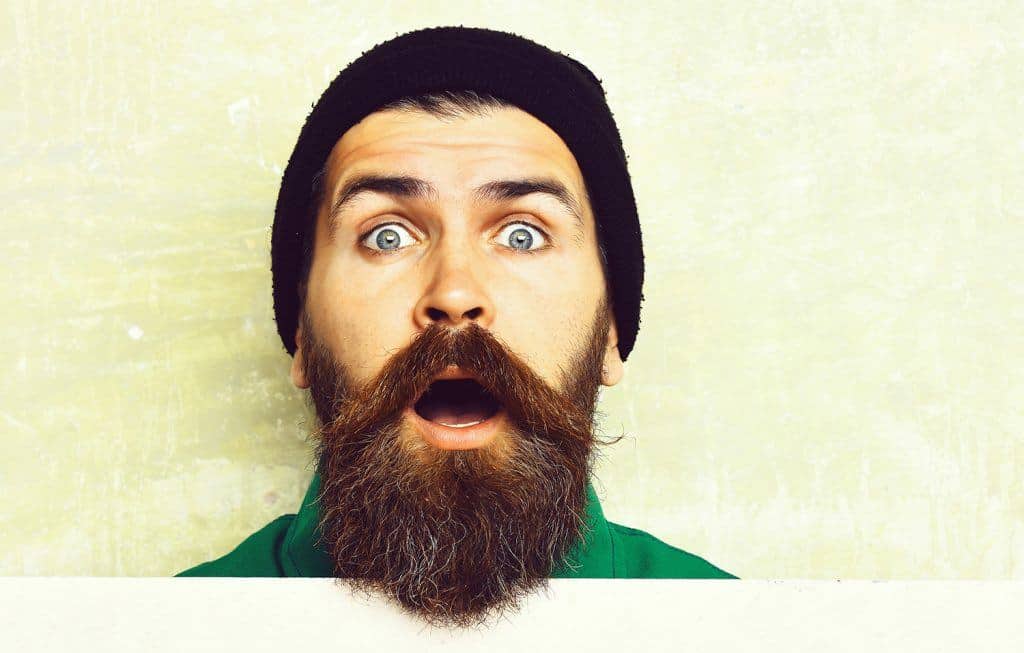
Not many men grow a beard hoping that it comes in patchy, with hair growing thicker in some areas of the face and bald patches on others. No, we want a beard that’s full and thick; bearded glory, if you will. You know, the kind thick enough to rival that of the Vikings
In this post, we’ll discuss how to fix a patchy beard, from trimming it to beard implants, as well as some of the causes of it. Rest assured, a patchy beard, in most cases, isn’t a lifelong diagnosis. It’s fixable – and that’s just some of the good news.
Let’s kick it off by looking at some of the causes of a patchy beard and then get into the ways you can fix it.
Why Do I Have a Patchy Beard?
While our focus will be on the many ways to deal with a patchy beard, let’s start with a quick primer on some of the patchy beard causes.
- Genetics
You don’t have much of a choice – or fight – regarding genetics.
You know the science: if your father and his father could grow a full, un-patchy beard, the chances are that you can, too. That’s how it works for a lot of things – tall dad, tall son, etc. – although it’s not that way in every case.
The bottom line, however, is that there’s not much you can do against genetics. Not that all hope is lost, as we’ll discover later.
- Alopecia Areata
Only a small percentage of the population suffer from alopecia areata.
Also known as “spot baldness, alopecia areata forms a coin-shaped bald spot on hair-covered areas of your body, including your beard.
There are ways to treat this condition; moreover, it may disappear without any treatment.
- Hormone Imbalance
A decrease in hormones that influence certain male characteristics is another potential cause of your patchy beard. Testosterone is one such hormone.
Dihydrotestosterone is an active form of testosterone, which has a significant impact on your beard’s fullness.
It affects a lot of body functions, especially in men, including erectile dysfunctions, reduced bone mass, sex drive, and even hair growth! Some men lose their hair, and some begin to grow a thin beard.
If this is the case with you, consider consulting your doctor, who could prescribe essential supplements.
- Age
Age is an essential factor in beard growth that many don’t like to admit. Men under 20, or even 25, tend to grow their beards very slowly or not at all.
The brain’s frontal lobe develops properly and reaches a level of maturity only around the age of 25 and continues until the late thirties. Apart from affecting our critical skills and the decision-making process, the frontal lobe affects beard growth, too. It also relates to the level of testosterone, among many other factors. So yes, having a beard is technically a sign of maturity.
Either way, if you’re younger and don’t have a thick beard, you shouldn’t worry. The chances are your beard will get thicker with age.
- Grooming
Learning how to groom your beard properly might not seem all that important, but it will definitely affect the way it grows. Make sure to harmonize your face shape while grooming your beard so that it doesn’t look messy. The hairs shouldn’t be scattered all around your face.
It’s also essential to clean and trim your beard regularly. Trimming the beard not only makes it look clean and fresh, but it also makes it thicker! Just like our hair, a beard can have split ends, which significantly slows down hair growth, which regular trims can help avoid.
- Stress, Diet, Lack of Exercise, Etc.
We’ll delve into all of these as we discuss how to fix patchy beards. Too much stress, a bad diet, couch potato behavior supplemented with junk food – all are potential causes.
Maintaining a healthy diet can have a massive impact on your beard growth. Consider consuming various nutrients such as protein, vitamins A, C, and E, omega-3 fatty acids found in nuts and fish.
Apart from that, make sure to exercise regularly in order to keep your body healthy, which is crucial for your beard density. Exercise also helps boost testosterone levels, which boosts beard growth too, so yeah try to live healthy, and also Ttry to avoid stress as much as possible since this is a common cause of hair loss.
That’s the basic Beard 101 version of “Why You Have a Patchy Beard,” but you can always dig deeper into the science of it. It’s our primary goal, however, to discuss the ways to fix your patchy beard.
1. Give Your Beard the Gift of Time

Beard grows in stages, 7 stages, to be precise. They had reasons, for sure: the beard itched during the early growth stages (an often exasperating beard newbie obstacle), they didn’t like the way they looked with a beard, OR it was patchy.
Well, if you’re only a few weeks, or a month, into growing your first beard and it looks patchy, our first piece of advice is, “Don’t panic!”
Too many men have wandered off the bearded path and picked up their razor because they didn’t attain full-bearded glory immediately.
True, we live in a society that often expects results in the snap of a finger, but growing a beard isn’t the same as going through the fast food drive-thru.
Yes, growing a beard will take you on a journey that may have some awkward moments, including moments when patchiness reigns supreme, especially in the early stages. It helps, during these stages of frustration, to keep a few things in mind:
- You’ll notice it more than onlookers – You’re impatient to achieve full-bearded glory, we get it. Anything that doesn’t resemble that may cause you the angst of thinking everyone sees your patchiness, but you’re probably wrong. Most people will look at you and think, “Hey, he must be growing a beard,” and leave it that.
- Beards get fuller with age – Men mature at different rates. We all remember the kid in high school who sported a full beard. Meanwhile, some of us are still trying to grow a respectable beard after we’ve finished college. If you’re in the latter group, just remember that beards do get denser as we mature. Patience, my friend, is always a virtue, particularly when it comes to growing a beard.
- Everyone experiences some patchiness – OK, the dude in high school who grew a full beard, or the guy you know who has the beard of a well-coiffed lumberjack; chances are better than good that their beards didn’t attain full growth in one simple swoop. They had some patchy spots along the way, too. It’s rare that a beard grows uniformly all over your face, chins, cheek, and neck without a patch or two, however small.
2. Own It

Nobody wants to be known as a murderous fool, especially when there are so many solutions to patchiness that don’t involve shaving. Why not just accept your beard for what it is – right now, not forever – and own it with pride?
And one way to own it is by styling it strategically.
For instance, keeping your beard shorter is one way to keep your patchy spots from being too obvious.
The light stubble is among patchy beard styles that take away the bald spots while still giving you a cool-looking beard.
Another is the chin strap, which isn’t much of a beard at all, but is still a somewhat popular style that leaves your cheeks clean-shaven while bringing hair to your jawline and chin. Most goatee styles also work well if you deal with patchiness.
Or, here’s the other thing: no rule says you shouldn’t just accept your patchy beard and rock it just the way it is. Sure, it might look scruffy, but you wouldn’t be the only man who’s attempted – and perhaps pulled off – the scruffy look. After all, you are who you are – own your style!.
3. Groom It

Let’s look at some grooming tips:
Brushing your beard
Women brush their hair because it adds volume.
Why not do the same for your beard?
Using a beard brush – not the same brush you use on your hair – will create a fuller look.
It lifts hairs to increase the volume, or at least the look of volume, of your magnificent beard. Brushing your beard also increases blood flow to the skin beneath your beard which, in turn, promotes beard growth.
Disclaimer: only use a brush if you have a decent volume of facial hair. Brush your stubble? Nah. There’s no need pouring water on a rock, just let it be.
Great example — Beard Brush by ZilberHaar
Apply beard oil
Beard oil is a wondrous product that should be part of every beardsman’s grooming kit.
Loaded with essential oils, which treat the skin, hair follicles, and enhance healthy beard growth, beard oil is important to full beard growth.
Many essential oils have anti-microbial properties and provide deep cleaning, while also making your beard easier to manage.
You’ll like how your comb glides through your beard hair after an application of beard oil.
Moreover, beard oil helps clear away dead skin cells that not only itch, but may inhibit hair growth, and helps to get rid of the dreaded beard itch.
Great example —Jack Black Beard Oil
Apply beard balm
Beard balm is another grooming tool you should have on hand as you transform your beard – yes, even your patchy beard – into something that’s worthy of envy.
While it doesn’t stimulate facial hair growth like beard oil, beard balm certainly aids in styling it (and making it seem fuller).
Balms contain wax to give you the kind of “hold” that locks your beard style in place.
While we’re at it, let’s not forget beard shampoo, another essential part of your beard-grooming routine.
Shampoo cleans away dirt, debris, and dead skin cells, and keeps it soft and manageable.
Just remember to use a beard shampoo, not the same shampoo you use on your hair and scalp. Beard shampoos don’t mess with the natural oils of your face that are essential to beard growth.
Not that you have to shampoo your beard every day, however, because daily washing increases the risk of drying out your beard.
Great example — Honest Amish Beard Balm
4. Use Products
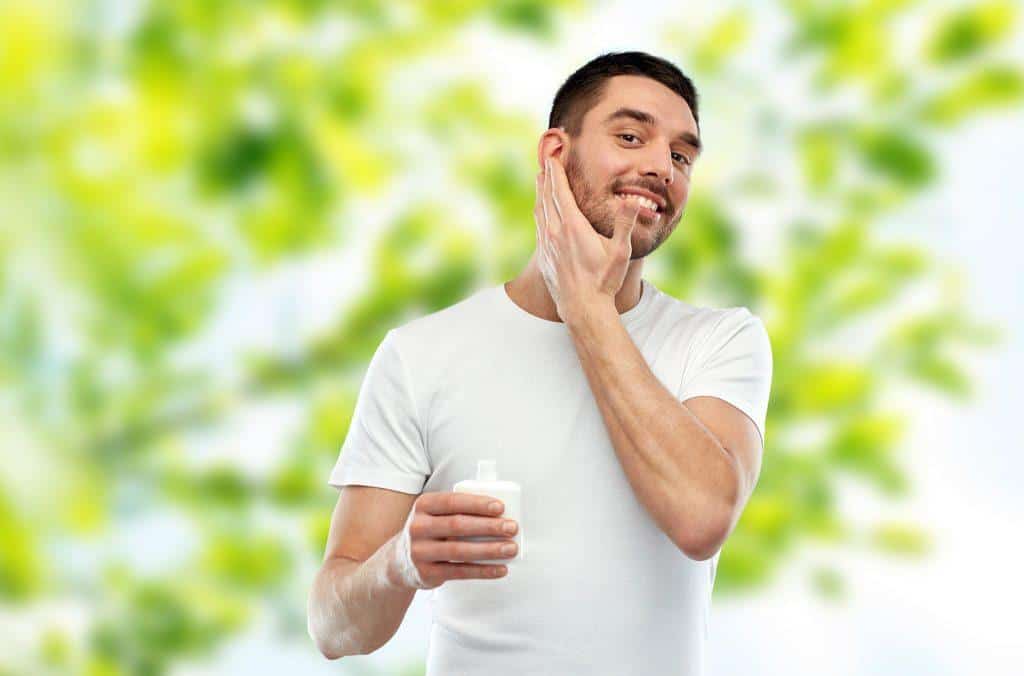
Let’s begin by saying a couple of things about hair growth supplements:
1) they’re for men who want a full-grown beard, not stubble (it’s safe to say that most men can grow stubble
2) the FDA approves hair growth supplements for the hair on a human head, but supplements that promote hair growth on the beard.
That doesn’t deny, however, the fact that many men report positive results from using supplements to enhance beard growth. So, by all means, give supplements a try as you explore different ways to deal with a patchy beard.
One you’ve probably heard of is Minoxidil.
Minoxidil, a.k.a Rogaine

The FDA approved it as a hair-growth product in 1988 and then marketed it under the Rogaine name.
When you think about it, men trying Minoxidil on their beards wasn’t much of a stretch.
“If it works up here, why not down here where I have a scruffy, patchy, beard that doesn’t want to realize its full potential?”
Ok, so maybe not those exact words, but you get the picture.
So, how does the stuff work?
Without getting too scientific, Minoxidil acts as a potassium channel opener that stimulates blood circulation in the hair follicle.
Improved blood flow to the hair follicles helps promote hair growth by allowing more hormones and nutrients to reach the hairs’ roots.
Another thing Minoxidil is purported to do is that it stimulates an enzyme called prostaglandin synthase-1 via the immune system.
Many scientists believe another cause of hair loss has something to do with the functioning of the immune system.
Minoxidil also prolongs the anagen phase of hair growth. Anagen is one of three phases of hair growth, the other being catagen and telogen, and is the phase that promotes new hair growth.
While the jury is, technically, still out on Minoxidil and its success in promoting beard growth (the whole FDA-approval thing), many bearded men have sung its praises.
There’s not much harm in giving it a try – it may cause dry skin and may lower your blood pressure – and who knows, it might help you in your fight against patchiness.
Vitabeard
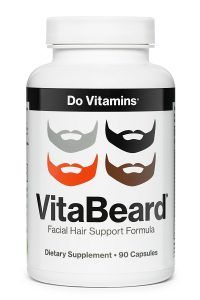
As its name suggests, Vitabeard is a mix of vitamins that boost the growth of hair and improves its overall quality.
One of the key ingredients in Vitabeard is biotin, a B-complex vitamin that is good for the hair and skin and is considered important to the process of hair growth.
Vitabeard’s list of ingredients includes vitamin C, a protein which repairs and prevents split hairs. Moreover, there’s also zinc, another nutrient that’s good for hair.
As with Minoxidil, the pressing question in regards to Vitabeard is, “Does it work?” Again, many users report positive results, i.e., a thicker beard that isn’t plagued by patchiness.
A quick note: Taking a supplement such as Vitabeard is particularly helpful if your regular diet falls short nutritionally.
Obviously, we hope it doesn’t, and a healthy diet should provide you with most of what you need regarding vitamins and minerals, but it’s true that vitamins support a thicker, healthier beard.
5. Diet/Nutrition

You know, if you eat junk, your health is probably going to be junk.
It even applies to your beard. If you eat a healthy diet, one that includes the proper vitamins and nutrients, your beard will benefit.
Some experts would argue that proper nutrition is the most important factor in fixing bald spots while creating a fuller beard.
Needless to say, that double cheeseburger and fries don’t constitute proper nutrition – at least not the kind we’re talking about here – but your beard-healthy diet should include:
- Plenty of protein
Without protein, your beard doesn’t stand a chance.
Why?
Because protein consists of keratin, which is a kind of protein made of amino acids.
Our bodies can’t produce amino acids on their own, so we need to get them from other sources, i.e., sources rich in protein. If you’re looking to add protein to your diet, eat fish, lean meats, poultry, eggs, etc.
- Vitamins C and E
Both vitamin C and E produce sebum, the body’s natural oil that moisturizes and lubricates facial hair to create a thicker beard. Spinach, citrus fruits, and sunflower seeds are excellent sources of vitamins C and E.
- Vitamin A and Beta A Carotene
Vitamin A and Beta A Carotene promote better hair growth because they’re good for repairing skin tissue. Carrots, kale, spinach, and egg yolks are good sources of A and Beta A Carotene.
- Omega-3 Fatty Acids
Fatty fish such as salmon, walnuts, and flaxseed oil are good sources of Omega-3 Fatty Acids, which promote overall hair growth while preventing it from becoming dry and brittle.
- Vitamins B6, B12, and Biotin
B vitamins and Biotin are said to prevent hair loss caused by stress while also promoting new skin and hair growth.
- Lots of water
We’ve all heard about the virtues of drinking a sufficient amount of water each day.
There are many reasons why, including the fact that a properly hydrated body will produce enough moisture to aid beard growth and a fuller, thicker beard.
On the flip side, consuming large quantities of alcohol will lead to dehydration (of your entire body, that is).
So, as fun as indulging in alcohol can sometimes be, “moderation” is always a good mantra to keep in mind.
- Stop Smoking
Smoking might also be playing a role in your patchy beard situation, as the nicotine in cigarettes constricts the blood vessels, causing very little blood to get to your beard. When your hair follicles don’t get enough nourishment, your beard won’t grow fully. It’s not rocket science.
- Don’t starve yourself
Diets are good for peeling weight off but diets that are too low in calories mess with a man’s testosterone production, which in turns leads to inhibited beard growth.
6. Exercise
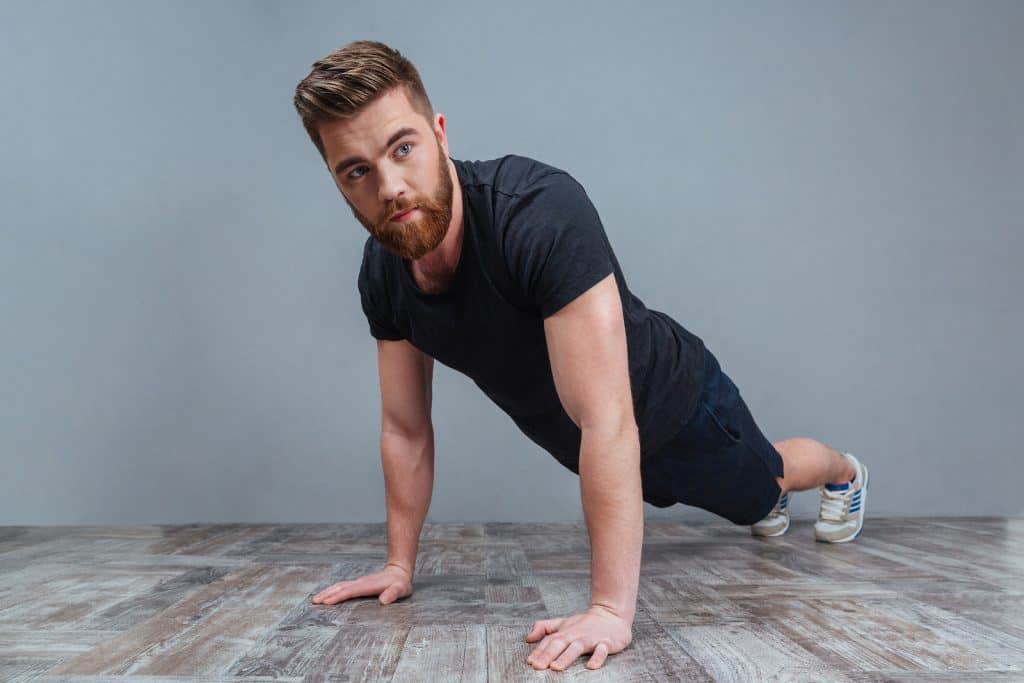
Seriously.
You’re doing every part of you a favor, including your beard. Yep, getting plenty of exercise not only helps to keep unwanted pounds off, but it also boosts facial hair growth.
Here’s how working out and beard growth go hand-in-hand:
- Working out increases testosterone levels and testosterone is a key trigger for facial hair growth. Why? Most importantly, testosterone converts into something called dihydrotestosterone – a sex hormone that’s a key contributor to hair growth, fertility, muscle gain, and more. Men with higher levels of DHT and testosterone usually have more facial hair than men who have lower levels. The only downside, however, is that men with high levels of DHT have a greater sensitivity to a hormone that causes male pattern baldness (MPB). If you have lower levels of DHT, however, and are frustrated about your beard growth or its patchiness, the good news is that you can take natural testosterone supplements.
- Exercising increases the blood flow to your muscles, scalp, and skin – including the skin on your face. The increased blood flow brings more oxygen and nutrients while providing a nice boost to facial hair growth.
- Exercise causes us to sweat – letting us know we’re getting in a good workout – and sweat carries toxins and waste products through the skin’s pores. Sweating helps unclog hair follicles to provide room for new hair to grow.
- Working out boosts your metabolism, which can aid hair growth while aiding your overall health.
- Working out helps your body recover more readily – which helps replenish facial hair and skin.
- Let’s be honest: working out can give you a killer body to go with your killer beard. It’s a lethal combination if you’re not that guy and your girlfriend notices that guy.
- Most types of exercise are good for facial hair growth, although fitness experts suggest that cardio workouts such as running, brisk walking, cycling, dance, and interval training are particularly beneficial.
7. Rest
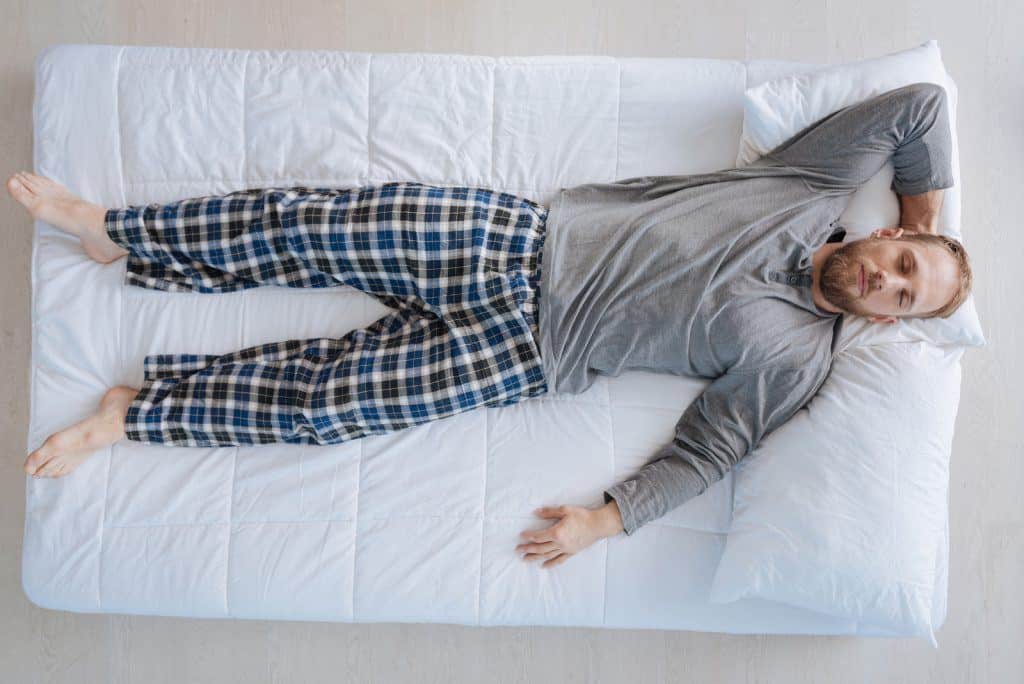
Numerous studies show that a lack of sleep has a variety of negative effects on the body, including that it reduces testosterone levels.
And reduced testosterone levels aren’t going to help your patchy beard.
A study by the Journal of the American Medical Association shows that a week of sleep deprivation – not getting more than five hours of sleep per night – resulted in a 10 to 15 percent reduction in testosterone levels.
The study, as well others, show that getting a good night’s rest regenerates testosterone levels.
So, your patchy beard could be the result of burning the midnight oil too much and too often.
Moreover, a lack of sleep increases your stress levels – which doesn’t do your beard any favors, either.
8. Avoid Stress
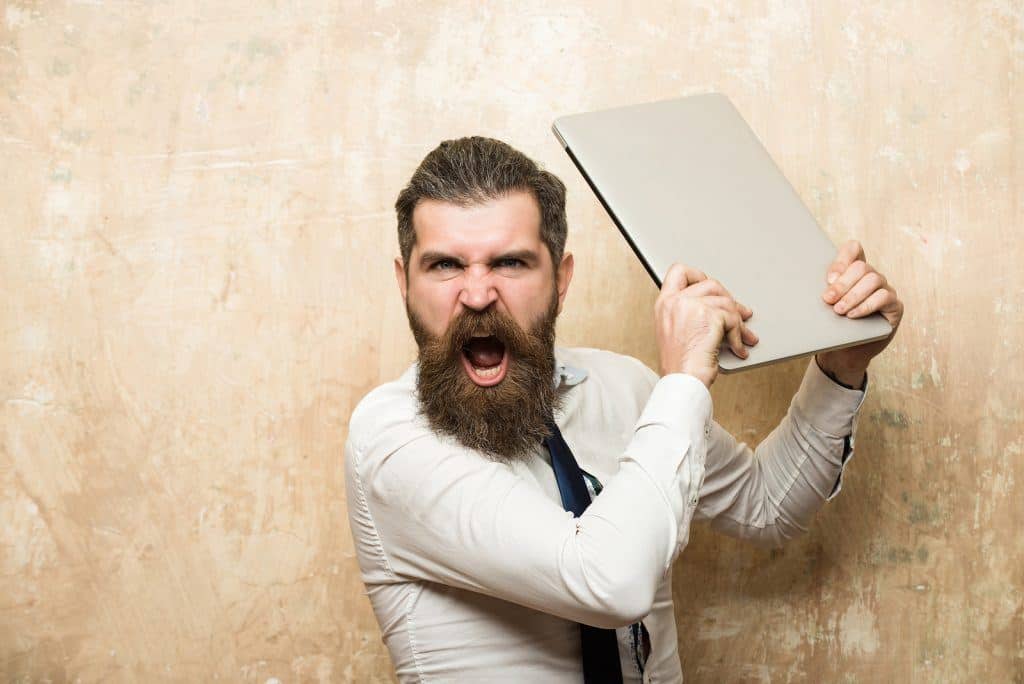
Like your mind and body, your beard feels the brunt of stress. Here’s why – when you’re under stress, your body increases its production of cortisol, a natural hormone associated with the “fight or flight” syndrome.
In turn, cortisol decreases the level of testosterone in the body. Stress also constricts blood vessels, making it harder for nutrients to reach the hair follicles.
No question reducing stress will enhance beard and overall hair growth. People joke about their hair “falling out in clumps” when they’re under a tremendous amount of stress, but it’s not far from the truth.
Fortunately, there’s a myriad of ways to reduce stress – from meditation to exercise to yoga to just hanging out in nature. We strongly recommend finding a stress-reducer that works for you.
9. Beard Implants

Implants are a potential solution for men who’ve struggled to grow a full, healthy beard since adolescence. That said, the number of beard implants has risen sharply in recent years.
The most common method of beard implants involves taking hair from the patient’s head – roots and all – and then surgically implanting them on bare patches of the face. The procedure only requires local anesthesia but often takes several hours.
Interestingly enough, the recently-transplanted hair will fall out in a few weeks, but will come back stronger because their roots are developing (and in it for the long haul). You’ll like the patchy beard before and after photos when you’ve completed the process.
One of the advantages of a beard transplant is that you’ll get the beard you want simply by telling the surgeon how you want it to look. One if their disadvantages as that they range in price from $3,000 to $7,000, which isn’t cheap by any means.
10. Take Care Of Your Skin
In order to have a nice, thick beard, you must first have healthy facial skin. Make sure to wash your face regularly to open up your pores and get rid of the dead skin cells. Exfoliate the skin to ensure that there are no ingrown hairs that would stop your beard from growing.
Apart from that, there are numerous moisturizers for different skin types. Pick the right one to keep your skin healthy. Their role is to lubricate your skin and treat dry skin, imperfections, and improve the texture!
Dry skin under your beard not only makes your beard thinner but also causes dandruff. Dry skin can be caused by numerous factors such as exposure to heat and humidity and will make your beard look messy and unhealthy.
The process might take some time, but you’ll notice a difference in your beard’s density with time.
11. Hormone Therapy

If your hair roots are determined to be hormone-resistant, hormone treatments are prescribed by a doctor to enhance the effects that hormones have on hair roots and follicles.
Generally speaking, hormone therapy hasn’t proven as effective as beard implants and may pose certain health risks.
Is your beard patchy? If so, what methods have you tried and with what success? We always welcome your feedback and suggestions and would like to hearwould to hear from you.
Until next time, bearded friends.


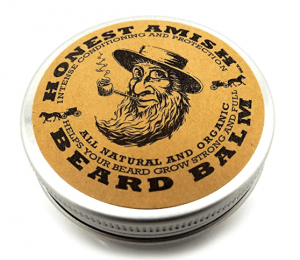
12 Comments
I’ve been noticing patches that weren’t there before. I’ve had a luscious beard for the longest and recently i notice patches that weren’t there before. could it be that i trimmed it down?
Could absolutely be. A full beard can look luscious even it’s a little bit patchy underneath.
Hey. I am having the same issues. What happened with your patches?
I’m gonna try minoxidil. I think my problem is genetics, every time I attempt to let my facial hair grow it looks absolutely ridiculous. There is only hair on my chin down to the middle of my neck and two patches of hair on both cheeks that grow down to my jawline. I let it grow for a two to three weeks but then I give up. But I’m gonna buy some minoxidil today and give an update later. Wish I could post a pic to show what it currently looks like lol
You’re not the only guy who has a sparse beard. Good luck with minoxidil. I’m sure if you stick with it, you’ll see results.
Yes, coconut oil with egg whites works very well for me. Do the research.
I’m seventeen and can almost grow a beard without patches largely due to my genetics but my mustache area is just lacking a bit of thickness.
I was always told that shaving your beard regularly can stimulate a thicker beard.
The Beard struggle is a very Good Product!!!
One word, Minoxidil!!
I want to grow a full thick beard but at the moment its not growing and its taking ages to grow what can i do to help it grow faster and thicker and fuller.
You should check out our post on how to grow a thicker beard.
Hello,
Just read that you have not mentioned any natural remedy. Applying coconut oil for sometime at night can be helpful.